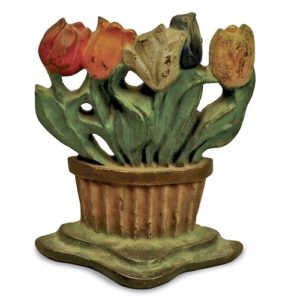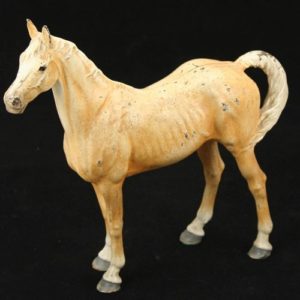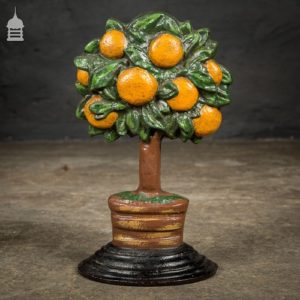Table of Contents
Whether you are looking to sell your old cast iron door stops or you just want to add them to your collection, knowing what to look for is essential. In this article, I will explain some of the key factors to look for when buying antique door stops.
Antique cast iron door stops
Decorative cast iron door stops are a fun and interesting way to add character and a sense of style to any home. They can be displayed on a kitchen counter, antique cupboards, or fireplace mantels. Some of them are designed to look like bookends.
Cast iron doorstops were first produced in Europe in the late 1700s, and later in the United States in the early 1900s. They were sold in black, bronze, or iron finishes and were made to hold open heavy doors.

The most important thing to consider when evaluating a doorstop is its condition. The best ones show minimal wear on the surface. This helps keep the value up. However, reproduction door stops may have mismatched seams and a rougher finish.
Another thing to look for is the paint. Some original manufactures didn’t paint the back side of their door stop. This is a big deal for collectors. Depending on the design, the painted surface may be the same color as the metal or may be repainted.
Many doorstops have an interesting story to tell. Some were used to prop open heavy English doors, while others were simply improvised. The early examples were made from rocks or bricks.
Are cast iron door stops valuable?
Among the most popular collectibles are cast iron door stops. Often referred to as “door porters”, these items were originally produced in the late 18th and 19th centuries. They were crafted in a variety of shapes and designs. These can be large and heavy, with painted or rusty surfaces.
While there are a variety of factors to consider, the most important factor is probably condition. A damaged door stop has almost no value. On the other hand, a restored, antique piece may have good detail.
Doorstops can be made of a variety of materials, including iron, brass, copper, and glass. The most common types include the painted iron and the cast iron. Many decorative doorstops are also stamped with the names of the foundry that produced the item.

In the early years, doorstops were mostly functional. They were used to hold doors open, but eventually were put to the side in favor of more functional items. The purpose of a door stop is to protect the wall and door from damage, but they also offer an interesting detail to any home.
Some doorstops are quite large and heavy. This means that they may not fit in every home. In addition, these items can be very expensive. The best place to find doorstops is through a knowledgeable dealer.
When were cast iron door stops made?
Decorative iron doorstops have been popular since the early 1920s. They are considered highly collectible, with prices running from less than $100 to several thousand dollars. They are also gaining interest as folk art. These colorful objects are often setting record prices in recent auctions.
Doorstops are generally made of cast iron, but can also be made of earthenware or glass. In some cases, they are painted or bronze finished. They are often stamped with a foundry name or studio name. Some are a two piece construction, with a screw at the top and a slotted screw at the bottom.

Cast iron door stops are practical, and make a great addition to any home. Doorstops were also popular during the Art Deco period. They were often purchased through mail order catalogs. They were painted to match the home’s theme. They also were purchased in gift shops and stores.
Doorstops were usually painted by hand. There were many different motifs. They were often purchased in sets and were often coordinated with cast iron accessories. There were also cast iron bookends, doorknockers, and shade pulls. They also came in a variety of themes, such as sports, animals, and art deco styles.
How do you tell if a doorstop is a Hubley?
Several companies have produced doorstops over the past two centuries. Some of the more popular producers include Littco Productions, Bradley & Hubbard, and Hubley.
Doorstops are cast objects made of iron. They are cast using molds, and they were created to be used in homes. These were often made by hand, using hand tools. They were molded in the shape of animals, fruit, and flowers. They were then painted by hand.
Some doorstops were made by hand, and others were created using power tools. Decorative iron doorstops became popular in the United States during the 1920s. They were then used in many homes until World War II. They were often used as a decorative piece, rather than a functional object.
Most original doorstops were crafted by hand, and did not use modern screws. They were put together with slotted screws. Eventually, production was halted during World War II. Some of the companies that produced these items had to use aluminum casting instead.
Hubley is one of the most popular manufacturers of decorative iron doorstops. They are especially desirable in their original condition. The company has been in business since the 19th century.
Original Hubley doorstops will be identifiable by the distinctive maker’s marks on the bottom. The early models were painted by hand, while the later models were sprayed for a base color. The paint should be very detailed.
What was the average cost of a doorstop in 1920?
Generally, cast iron doorstops are very appealing and functional. These decorative pieces add charm to any home. They are popular with collectors, decorators, and fans of folk art.
These items are available in a variety of shapes and sizes. They are usually cast iron or brass. They are also available in a variety of colors, including bronze and black. They can be found in the $100 to $500 range.
In the late 19th century, cast iron doorstops were a common decor item. They were used to hold heavy doors open. They were often painted to create a realistic effect. They also were brushed by a broom to give them a nice finish. They were a cheap way to add color and a decorative touch to any home.
There were many different companies that manufactured door stops. One of the most common was Wilton Products Inc. in Wrightsville, Pennsylvania. Other companies included Bradley & Hubbard in Meriden, Connecticut, and Albany Foundry in Albany, New York.
The early designs used wooden handles. These handles were later replaced with metal ones. The earliest models were also painted. The colors on the surface were important to collectors.
After World War II, cast iron doorstops were replaced with die-cast zinc. Today, iron doorstops are displayed like rare porcelain figurines.
What is the filling in doorstop?
During the late 18th and early 19th centuries, doorstops were produced in many different shapes and styles. They were generally made of cast iron or metal, and were hand-painted. They were also decorative pieces that added charm to any home.
One of the earliest door stops was made of wood, which was quickly replaced by cast iron in the 19th century. During World War II, manufacturing of doorstops decreased. The raw materials used to make them were gathered by neighborhood drives for military use.
One of the most popular door stop makers was Hubley, based in Lancaster, Pennsylvania. The Hubley Manufacturing Company created a variety of cast iron door stops. In addition to Hubley, there were many other companies that produced doorstops.
These were made by pressing a wooden form into sand and then casting it out of cast iron. The most common shapes were people, flower baskets, animals and cottages.
In the late 1800s, doorstops were sold as decorative pieces, and housewives could buy coordinated sets of cast iron accessories. These included doorstops, doorknockers, bookends, and shade pulls. They were also inexpensive. Some collectors prefer doorstops with a natural appearance.
The history of doorstops is fascinating, and many collectors are discovering them for the first time. The best place to learn about them is The Doorstop Book, a scholarly publication that contains over 1000 doorstops in full color. It also has information on the foundries that made them.